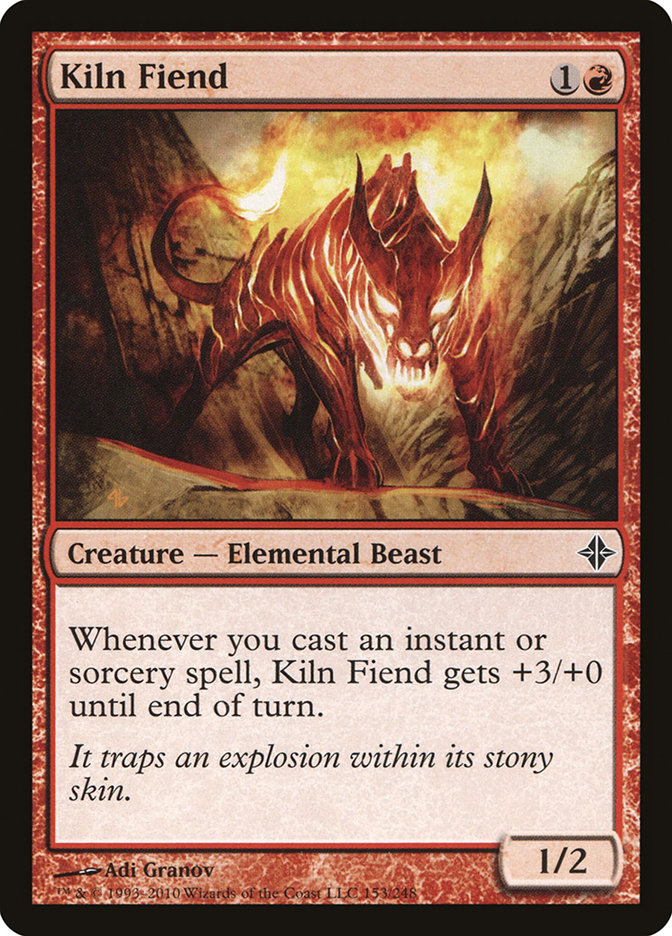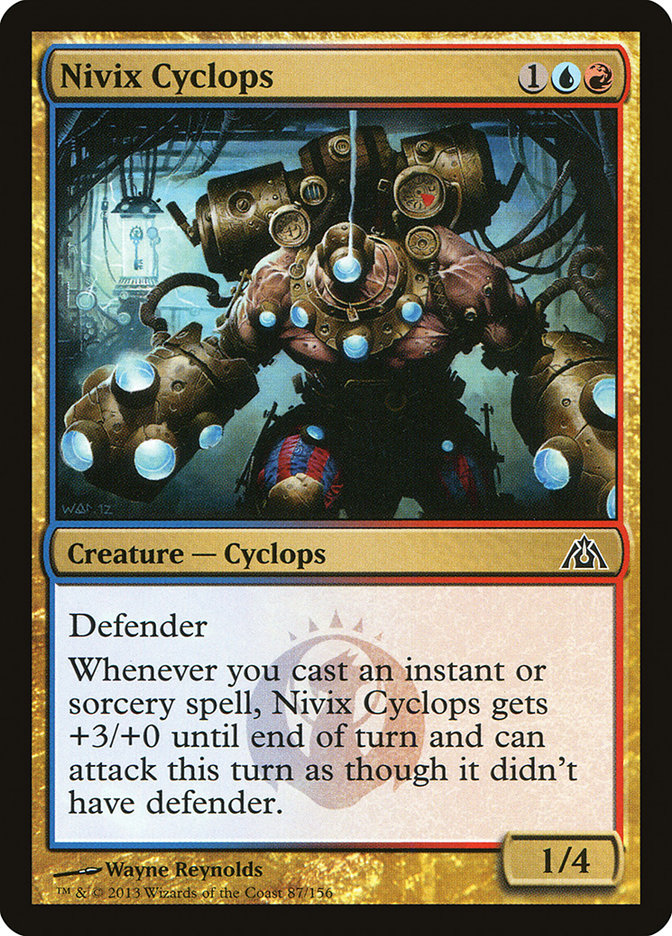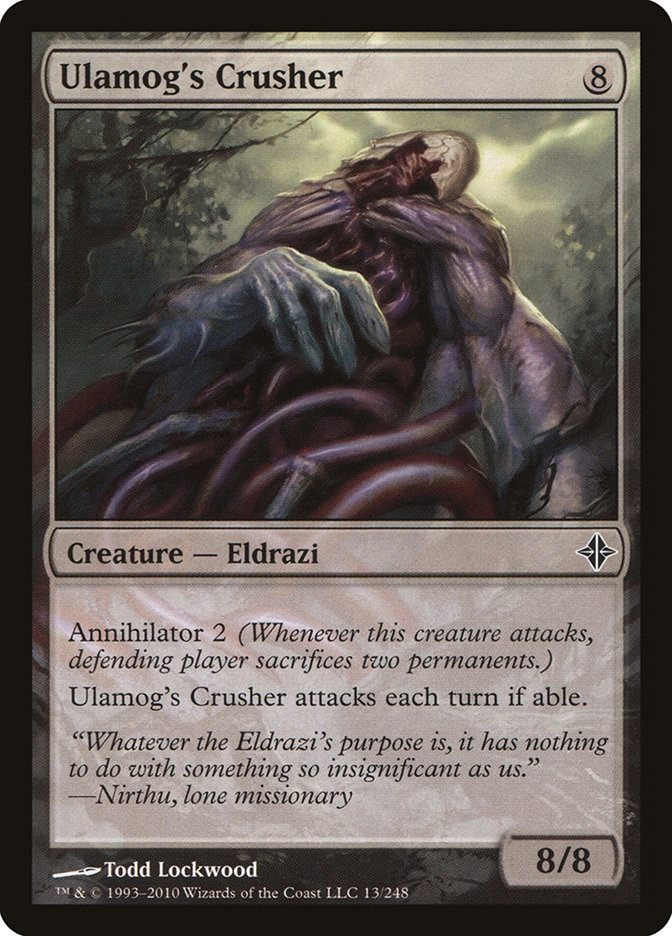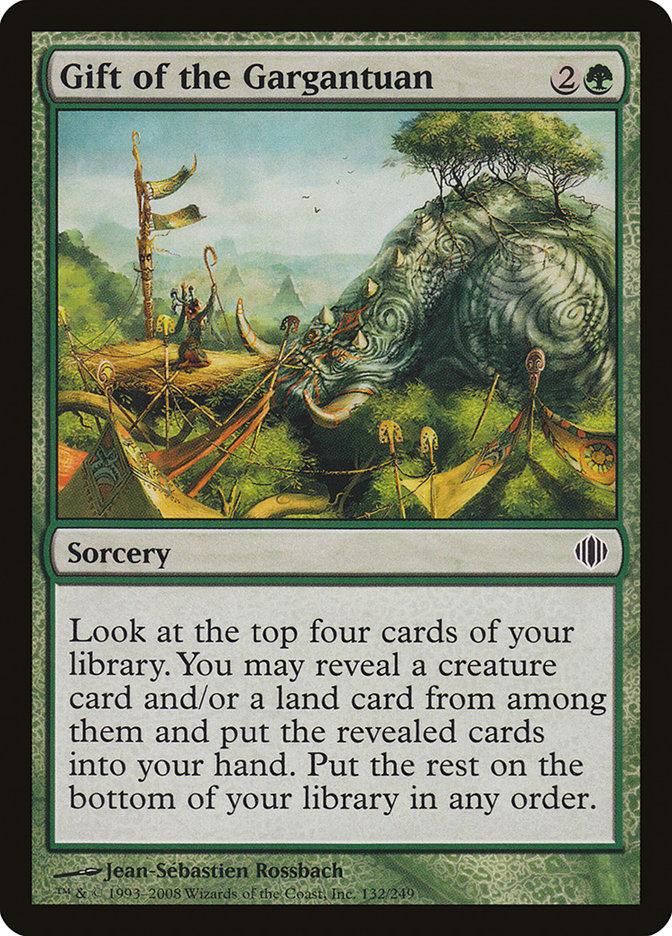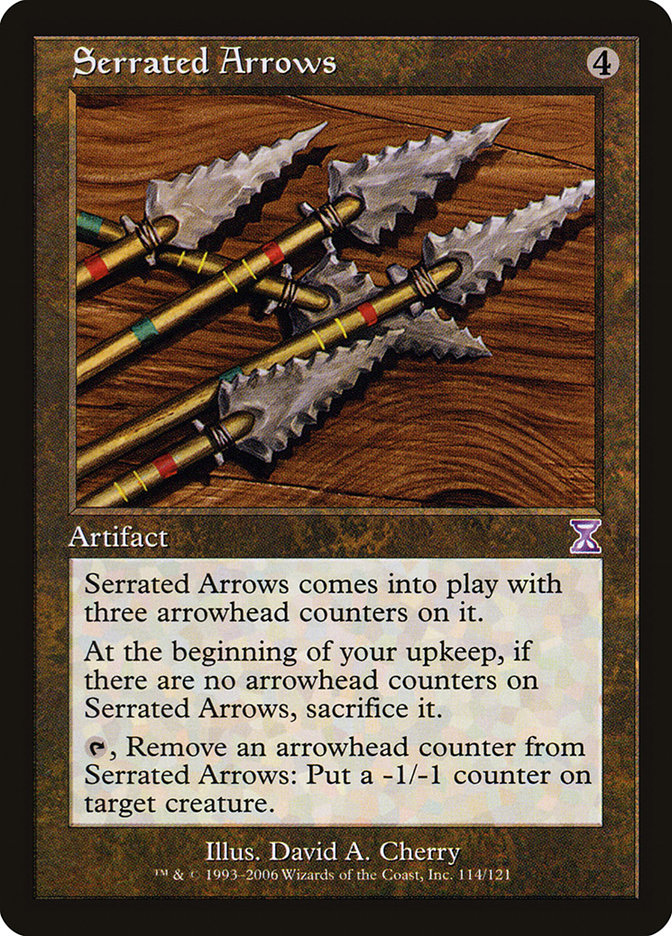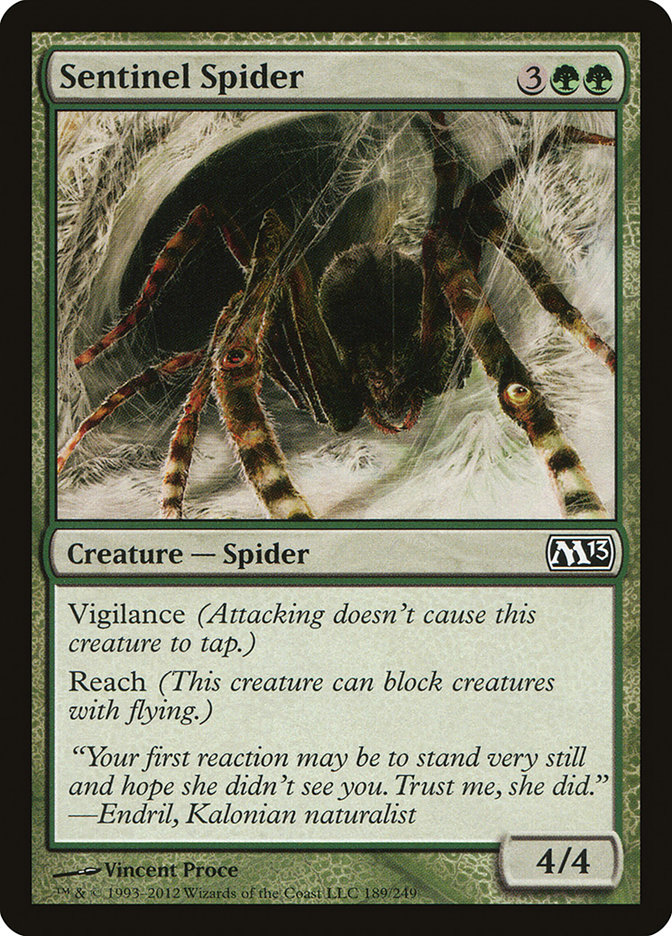This all started because I wanted to attack. After playing the Rats deck featured a month ago, I decided I wanted to play a different sort of game. Good man and fellow dinosaur Joshua Claytor had been having a decent amount of success playing the Nivix Cyclops and Kiln Fiend aggro deck known as both Nivix Fiend and the more whimsical Eye Candy (because look at that pepper). So I sleeved up the deck, and by that I mean saved it in the client and decided to start going all in:
Creatures (12)
Lands (18)
Spells (30)
- 2 Lightning Bolt
- 3 Shadow Rift
- 4 Ponder
- 2 Dispel
- 3 Distortion Strike
- 4 Preordain
- 4 Assault Strobe
- 4 Apostle's Blessing
- 4 Gitaxian Probe
Sideboard

I did not get there. Not once. While many people have found success with this list, I am not one of them. This has more to do with the style of deck it is than a reckoning on Eye Candy’s capabilities. Make no mistake—the deck is powerful. The ability to convert spells that enhance the quality of your hand into damage should not be underestimated. The deck is not without flaws, relying heavily on a turn 2 Kiln Fiend, but turn 3 and 4 kills are easily attainable. I mean, any deck that makes Artful Dodge playable has to merit some consideration.
However, I do not like playing on rails. I have never been a fan of combo decks because at some point it all becomes rote. I like to think this was hammered into my brain in the early days of sanctioned Pauper when testing partners routinely looked at my decks and asked "what happens when you draw your cards out of order?" There are so many ways to lose in Magic; you don’t want to lose to your own opening seven. Since then I have favored decks that allow me options (at least in Pauper). This probably helps to explain my unnatural obsession with Faithless Looting—there are just so many choices to be made!
Back on track, after putting down Rats and casting aside Eye Candy, I was looking for something else. Thankfully, this list caught my eye in the July 12th Daily Event results:
Creatures (24)
- 3 Fierce Empath
- 4 Wall of Roots
- 4 Llanowar Sentinel
- 4 Aurochs Herd
- 1 Game-Trail Changeling
- 1 Jungle Weaver
- 4 Overgrown Battlement
- 1 Ulamog's Crusher
- 1 Fangren Marauder
- 1 Maul Splicer
Lands (23)
Spells (13)

Now, this deck gives you options. Sure, it does play on rails somewhat—its core plan is to ramp into huge monsters. That being said, it gives you multiple paths. There is the wall path, leading Overgrown Battlement into Wall of Roots, which gives this deck access seven mana naturally on turn 4. Replace Wall of Roots with a second Overgrown Battlement and we are talking an Iron Priced Ulamog’s Crusher on turn 4. Most games are over shortly after that.
There is also the mana denial option. Unlike a Stone Rain or a Thermokarst, Reap and Sow and Mwonvuli Acid-Moss can generate card and tempo advantage. Yes, you are spending a turn, but you are going up a card in play and a resource to boot. Reap and Sow is an all-star here because it can put you more than one turn up thanks to fetching a Cloudpost (or a Glimmerpost with other Loci in play). Reap and Sow is the better of the two spells here by a not so small margin thanks to playing two ways because sometimes you just want to ramp.
With all the mana, this deck can generate an impressive stream of creatures. Fangren Marauder is an all-star against Affinity and plays nicely with Crop Rotation and Tree of Tales. Maul Splicer is an army in a card, and Jungle Weaver . . . well, it blocks fliers and cycles. The best of the bunch are Llanowar Sentinel and Aurochs Herd. Aurochs Herd is the world’s slowest Squadron Hawk, but it hits hard. Only Affinity has natural 4/4s, and attacking with more than one Herd means that there are no good blocks. The ability to fetch out any other Aurochs gives added flexibility in a fifth 4/4 (Game-Trail Changeling), although if you wanted to get greedy with a capital G, it could go find a Nameless Inversion.
Llanowar Sentinel is another army in a bottle. Unlike Aurochs Herd, though, you only need one, and then the others can just come into play for the low cost of 1G. Going macro, for 5GGGG you can have eight power split across four bodies. This is quite good in a format largely defined by 2/2s, especially since yours are all Hurloon Minotaurs. Even just getting a second Llanowar Sentinel is awesome, providing a solid defense while you develop your mana.
Fierce Empath provides an added dimension to the deck, fetching any of your game enders and acting as additional copies of each. I found it fragile. In testing, it was rare that I wanted to invest three mana in the Elf to find something else. The card is powerful, but I found myself winning on the backs of Llanowar Sentinels buying time more than finding a game ender.
Moment’s Peace helps this game plan. With three main (and the fourth in the board), the deck can take all sorts of free turns. So many Pauper decks want to win with attacking (basically all of them besides Fissure Post, Temporal Storm, and Izzet Post) that being able to hedge stall attacks until your Eldrazi monster comes online is what I would call a good plan.
Crop Rotation, on the other hand, never impressed me. This deck wants mana. Yes, instant-speed life gain through Glimmerpost is nice, but I rarely wanted to be getting rid of any land for this ability. Rather, I wanted them all so I could cast my spells in the late game, whether it be all the Llanowar Sentinels or just two Aurochs Herds in a single turn. Crop Rotation, no matter how sweet, hurt this plan more than it helped.
After a few games, it became clear that I really enjoyed the ramp angle of this deck and the card advantageous creatures. The walls were sweet, pulling double duty as blockers and accelerants. I also enjoyed the possibility of going to town with an Ulamog’s Crusher and buying my time with Moment’s Peace. I was less thrilled with some of cute choices in giant monsters. I also felt the deck needed some additional draw spells and a way to deal with creatures on a more permanent basis.
After countless test matches and feedback provided via my Facebook page, I have settled on this list:
Creatures (19)
- 4 Wall of Roots
- 4 Llanowar Sentinel
- 4 Aurochs Herd
- 4 Overgrown Battlement
- 2 Ulamog's Crusher
- 1 Sentinel Spider
Lands (23)
Spells (18)

The differences made a huge impact. First, Ancient Stirrings is the best part of Crop Rotation and Fierce Empath and also plays Fabricate in this deck. Being able to dig deeper for lands or an Ulamog’s Crusher is huge. The ability for it to find a Serrated Arrows also allows the deck to run two of the -1/-1 counter machines, freeing up precious slots. Four is too many because you want one in your opening hand and one later on in games but multiples makes for some seriously awkward draws.
Speaking of awkward, Gift of the Gargantuan looks weird in that it is probably near the bottom of the Divination scale. It fills the same role as Fierce Empath: helping to find a game-ending threat. Unlike Fierce Empath, Gift of the Gargantuan can be used in the earlier parts of the game to dig towards more Cloudposts and creatures you can actually use before turn 5. Considering all you want to do in this deck is draw creatures and lands, Gift of the Gargantuan is the right card for the job. Yes, I have had the feel bad of only drawing one card off of it, but the upside of drawing two is so great that the risk is well worth the negatives.
Serrated Arrows has also been huge. Relying just on Moment’s Peace is tough because the opponent can just bide their time until you run out of Fogs. Serrated Arrows allows you to shrink their creatures to manageable sizes. This makes trading creatures in combat far easier and again buys more time for the big monsters to come out and play. It also helps to fight some of the more dangerous creatures that can kill you out of nowhere, taking out both Atog and Kiln Fiend.
Finally, Sentinel Spider. A limited all-star, this card has proved its worth. Once again, a 4/4 is larger than most creatures people will throw at you, making it difficult to block. Having vigilance is amazing, allowing Sentinel Spider to crash in and sit back on defense. Often it will attack and immediately trade for two of their best creatures, which for five mana is none too shabby. Finally, with reach, this creature helps to shut down Delver of Secrets and Somber Hoverguard.
So why run this deck? While Green Post originally rose to prominence in the wake of Frantic Search powered Temporal Storm and the Affinity decks that were trying to keep Temporal Storm in check, the metagame has reached a point where destroying lands and casting Moment’s Peace makes sense again. Currently, aggro (as defined by Stompy, Goblins, Eye Candy, and Affinity) constitutes around 40% of the winners metagame, with another 25% being made up by Cloudpost decks. Throw in Temporal Storm (another deck that relies on specialty lands) and Sentinel Green has good matchups with approximately two-thirds of the expected winners metagame.
On top of that, this deck can produce larger threats faster than any deck aside from Affinity, and even the robots shake in their mechanical boots in the shadow of Ulamog’s Crusher. It has multiple redundant pieces in the walls, the land destruction, the ramp spells, and the big creatures.
A few notes on the sideboard: the spells you are going to side out most are Moment’s Peace and Mwonvuli Acid-Moss, which come out against different ends of the spectrum. Against aggressive decks, Mwonvuli Acid-Moss is too slow. Unlike Reap and Sow, it cannot fetch a Glimmerpost, so it often gets the axe for better defensive cards (such as Moment’s Peace, Serrated Arrows, and the two Penumbra Spider).
Conversely, Moment’s Peace is largely useless against the control and combo decks in the format. There, threats like Wickerbough Elder (there are so many artifacts in this format) or Fangren Marauder (what . . . sometimes you just want a 5/5) come in. Penumbra Spider often comes in as well thanks to its resilience to removal. The Scattershot Archers are for Delver and Temporal Storm, where their ability to take out multiple fliers comes in handy.
The sideboard is clearly geared towards Affinity. Out of the popular aggressive decks, this is the most dangerous. Fangren Marauder does a ton of work in keeping you alive. In this matchup, not only do you remove Mwonvuli Acid-Moss, but you also remove Ancient Stirrings and Gift of the Gargantuan in favor of Fangren Marauder, Wickerbough Elder, Naturalize, and the additional copies of Moment’s Peace and Serrated Arrows.
A few notes on playing this deck:
- Do not keep land-light hands that rely on Ancient Stirrings. Ancient Stirrings is a great supplement, but unlike its blue cousins it does not actually increase the quality of your draw. It should be used to find a piece of the puzzle, not run right to the conclusion.
- If given the option of leading with Wall of Roots or Overgrown Battlement, lead with Overgrown Battlement unless you fear Flame Slash. This will let you cast Wall of Roots and then use Battlement for two. Provided you played a land, this gives you access to four mana (thanks to Wall of Roots). Also, avoid misclicking Wall of Roots—you cannot undo the mana activation.
- Against Eye Candy, always play like they are holding Dispel because they usually are.
- Aggressively play Glimmerposts against Burn and do not be afraid to side into Fangren Marauders and Serrated Arrows in order to shrink whatever creatures they have and potentially kill your own for five life. Burn is probably your worst matchup, but it is such a small part of the metagame that it almost does not matter.
- Against attrition-based decks, just keep playing out threats—yours are bigger and come with friends.
- Finally, do not be afraid to only fetch one Llanowar Sentinel. Sometimes it is absolutely correct to conserve mana, and even going up one card is huge.
Sentinel Green is my favorite deck at the moment. Between the tournament practice room and two-man queues, I have posted about a 65% win rate with the deck, which surprised me just a bit. The one card I keep trying to find a slot for is Battlefield Scrounger, which would let the hits keep on coming in the late game. However, I just love the card, and the game rarely ever lasts that long.
Moving forward, the biggest threat to this deck is Slivers. One of my losses in testing was to a pre-M14 Sliver deck, and it was just able to run me over. If the deck catches on, Sentinel Green might need to up its removal count. Because even a 5/5 Sliver dies when it gets into a Prey Upon fight with Ulamog’s Crusher.
Keep slingin’ commons-
-Alex
SpikeBoyM on Magic Online
https://www.facebook.com/nerdtothecore
The Colors of Pauper: W U B R G
Discuss Pauper on Twitter using #MTGPauper

